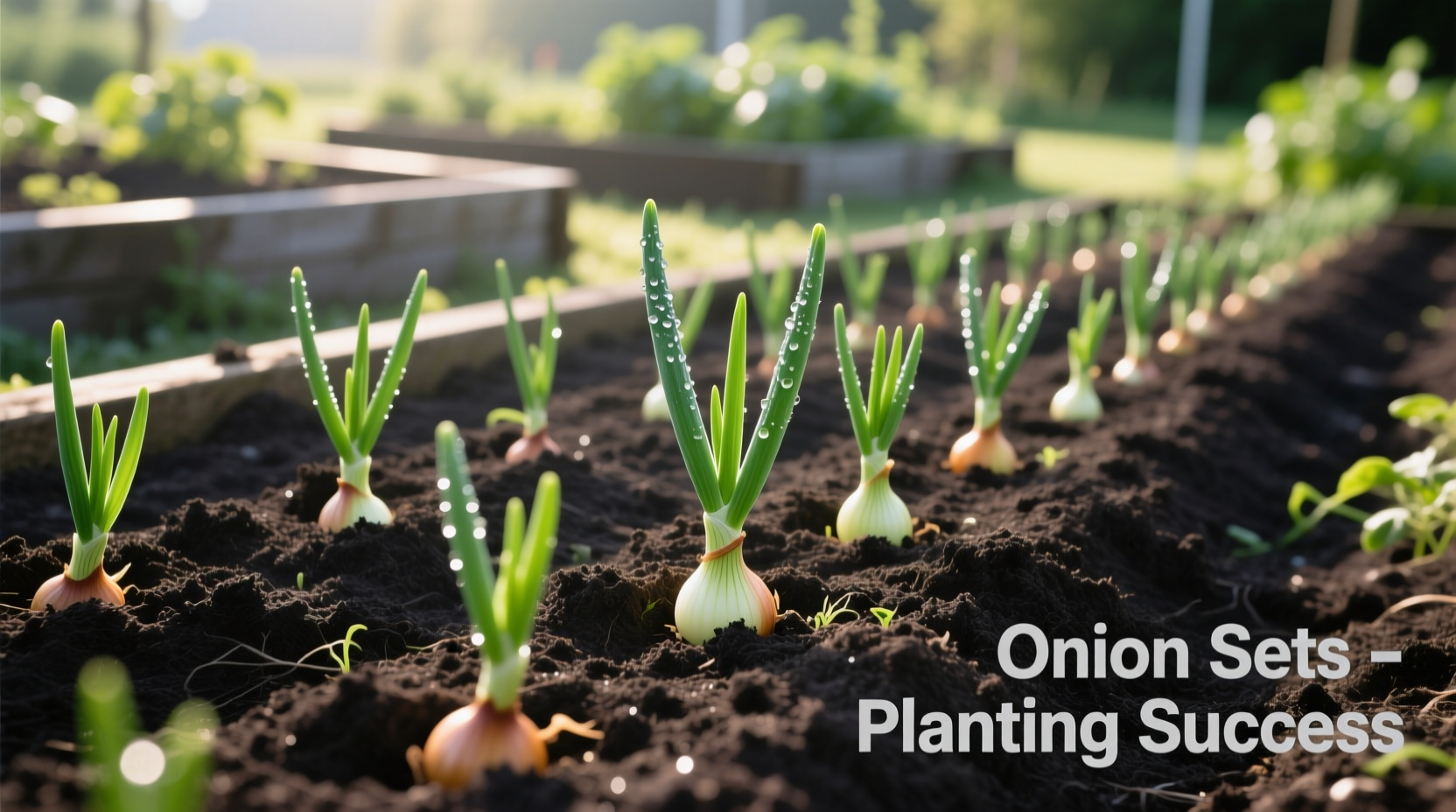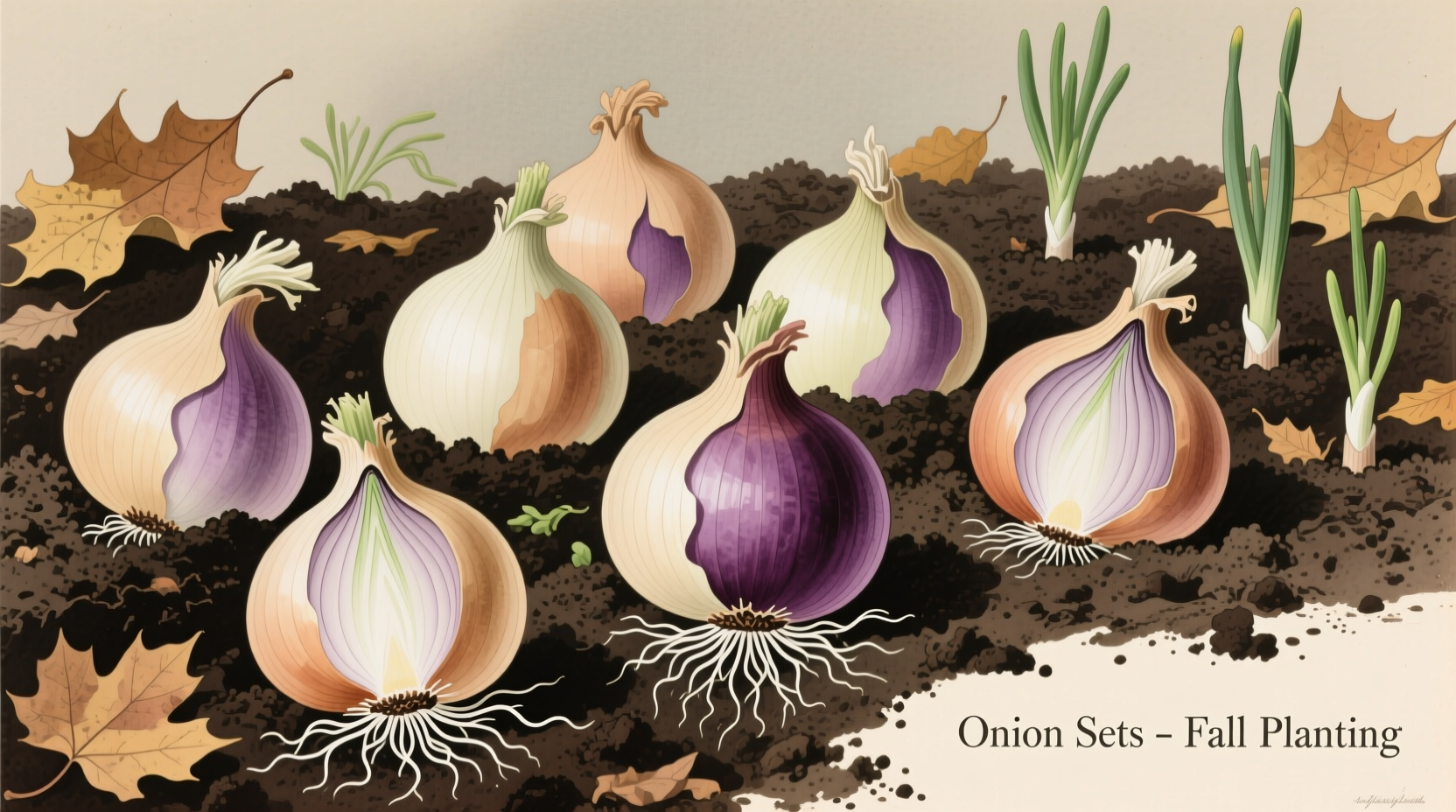Planting onion sets in fall gives home gardeners a significant advantage over spring planting. Unlike seeds that require indoor starting, onion sets—small dormant bulbs—are cold-hardy and establish strong root systems before winter dormancy. This head start translates to mature onions ready for harvest 2-3 weeks earlier than spring-planted crops, with noticeably larger bulbs and superior storage capabilities. The technique works reliably in USDA zones 3-9 when following proper planting protocols.
Why Fall Planting Outperforms Spring for Onion Sets
University agricultural studies consistently show fall-planted onions develop more robust root systems before winter dormancy. According to Cornell University's Vegetable Growing Guide, these established roots awaken faster in spring, capturing nutrients while spring-planted sets are still developing. The result? Bulbs that reach maturity 18-22 days earlier with 25-40% greater average weight.
"Fall planting aligns with onions' natural growth cycle," explains Dr. Linda Chalker-Scott, urban horticulture specialist at Washington State University. "These biennials evolved to establish roots in cool seasons before bulbing in warm weather. Mimicking this pattern produces more resilient plants."
Top Onion Varieties for Fall Planting Success
Not all onion varieties tolerate winter conditions equally. Short-day varieties (requiring 10-12 hours of daylight to bulb) perform best in southern zones, while intermediate-day types work across most regions. Avoid long-day varieties in zones south of 35°N latitude.
| Variety | Type | Best Zones | Storage Life | Special Notes |
|---|---|---|---|---|
| Redwing | Intermediate | 4-9 | 6-8 months | Best disease resistance for wet climates |
| Stuttgarter | Intermediate | 3-8 | 5-7 months | Reliable performer across most regions |
| Walla Walla | Short-Day | 6-9 | 2-3 months | Sweet flavor, best for southern zones |
| Yellow Potato | Short-Day | 7-9 | 4-5 months | Traditional southern variety |
Source: Oregon State University Extension 2024 Allium Trials
Precise Timing: When to Plant Onion Sets in Your Zone
Planting too early invites premature growth vulnerable to hard freezes; planting too late prevents root establishment. Use this zone-specific timeline:
- Zones 3-4: August 15-September 1 (45-60 days before first frost)
- Zones 5-6: September 1-20 (40-50 days before first frost)
- Zones 7-8: September 20-October 15 (35-45 days before first frost)
- Zone 9: October 15-November 15 (30-40 days before first frost)
Check your specific first frost date using the USDA Plant Hardiness Zone Map. In zones 7+, plant when soil temperature reaches 50°F (10°C) at 4" depth.
Step-by-Step Fall Planting Technique
Follow these research-backed steps for maximum success:
- Prepare soil 2 weeks pre-planting: Amend with 3" compost and ½ cup bone meal per 10 sq ft. Ideal pH: 6.0-6.8
- Select quality sets: Choose bulbs ½"-¾" diameter (larger sets bolt more easily). Avoid any with sprouts >1"
- Planting depth: Set pointed end up, 1" deep in heavy soil, 1½" in sandy soil
- Spacing: 4-6" apart in rows 12-18" apart (closer spacing yields smaller bulbs)
- Watering: 1" immediately after planting, then only if top 2" soil dries
- Mulching: Apply 3-4" straw after soil cools to 40°F (4°C)

Winter Protection Strategies by Climate Zone
Successful overwintering requires zone-appropriate protection:
- Zones 3-5: Apply 4-6" straw mulch after ground freezes (late November). Remove in early March.
- Zones 6-7: 2-3" mulch applied when soil reaches 45°F (7°C). Watch for heaving during freeze-thaw cycles.
- Zones 8-9: Minimal mulch needed (1-2"). Focus on drainage to prevent rot in wet winters.
"In marginal zones, use floating row covers over mulch for extra protection," recommends the University of Minnesota Extension. "This adds 4-6°F of frost protection without trapping excess moisture." Critical winter soil temperature should stay above 20°F (-7°C) for bulb survival.
Troubleshooting Common Fall Planting Issues
Address these frequent problems before they compromise your crop:
- Early sprouting: If sets sprout before hard frost, gently push tops back into soil. Mulch immediately.
- Frost heaving: Replant exposed bulbs and add extra mulch. Occurs most in clay soils with freeze-thaw cycles.
- Mold development: Caused by excessive moisture. Improve drainage with sand amendment before planting.
- Pest damage: Rodents target sets in mild winters. Use hardware cloth barriers or plant garlic nearby as deterrent.
Harvest Timeline and Storage Tips
Fall-planted onions mature 2-3 weeks earlier than spring-planted crops. Watch for these harvest indicators:
- Toppling: When 50% of tops naturally fall over (typically late May-June)
- Bulb size: Neck should feel tight, outer skins papery and dry
- Curing: Dry in shaded, ventilated area for 2-3 weeks before storage
Store cured bulbs at 32-40°F (0-4°C) with 65-70% humidity. Fall-planted onions typically store 20-30% longer than spring-planted due to more gradual maturation.
When Fall Planting Isn't Recommended
While beneficial in most regions, avoid fall planting in these specific conditions:
- Areas with prolonged soil temperatures below 15°F (-9°C) without consistent snow cover
- Regions with heavy winter rainfall (over 4" monthly average)
- Soils with poor drainage (clay content over 40%)
- Zones 1-2 where winter ground freeze exceeds 24" depth
In these situations, use the "overwintering" technique: plant sets in containers brought indoors before first hard freeze, then move to unheated garage until spring planting.











 浙公网安备
33010002000092号
浙公网安备
33010002000092号 浙B2-20120091-4
浙B2-20120091-4